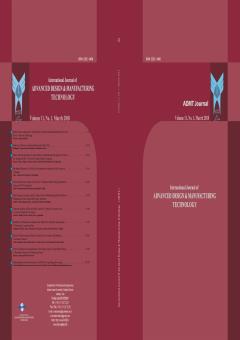A Stress-Informed Approach with Vibration Analysis for Railway Safety Monitoring
محورهای موضوعی : advanced manufacturing technology
Hosein Esmaili
1
,
Mohammad Ali Afshar Kazemi
2
![]() ,
رضا رادفر
3
,
رضا رادفر
3
![]() ,
nazanin pilevari
4
,
nazanin pilevari
4
![]()
1 - دانشجوي دكتري
2 - Department of Industrial Management, Science and Research Branch, Islamic Azad University, Tehran, Iran
3 - عضو هیات علمی دانشگاه آزاد اسلامی واحد علوم و تحقیقات
4 - Department of Industrial Management, West Tehran Branch, Islamic Azad University, Tehran, Iran
کلید واژه: Railway Safety, Machine Learning, LIDAR Point Cloud, Random Forest, Risk Prediction, Feature Importance.,
چکیده مقاله :
Abstract: Railway safety requires diligent risk assessment due to the complexity of transportation systems. This study explored the application of machine learning, specifically Random Forest modeling, to LIDAR point clouds for predicting risks. Key features, including Z (Height), Intensity, X, and Y, were analyzed to classify risk levels into High, Medium, and Low. The model achieved perfect classification, validating its effectiveness with high accuracy and strong predictive capabilities. Feature importance analysis identified Z (Height) and Intensity as the most predictive features, aligning with expectations for LIDAR-based hazard detection. Comprehensive visualizations, such as confusion matrices and scatter plots, further corroborated the robustness of the model. Future work could integrate LIDAR data with advanced object detection models, such as YOLO, to enable real-time obstacle identification. Additionally, leveraging multi-modal learning by combining LIDAR data with visual and thermal inputs could enhance robustness under varying environmental conditions. Temporal analysis of point cloud data and the development of lightweight models for real-time applications also hold significant promise for advancing predictive capabilities in dynamic railway environments.
Abstract: Railway safety requires diligent risk assessment due to the complexity of transportation systems. This study explored the application of machine learning, specifically Random Forest modeling, to LIDAR point clouds for predicting risks. Key features, including Z (Height), Intensity, X, and Y, were analyzed to classify risk levels into High, Medium, and Low. The model achieved perfect classification, validating its effectiveness with high accuracy and strong predictive capabilities. Feature importance analysis identified Z (Height) and Intensity as the most predictive features, aligning with expectations for LIDAR-based hazard detection. Comprehensive visualizations, such as confusion matrices and scatter plots, further corroborated the robustness of the model. Future work could integrate LIDAR data with advanced object detection models, such as YOLO, to enable real-time obstacle identification. Additionally, leveraging multi-modal learning by combining LIDAR data with visual and thermal inputs could enhance robustness under varying environmental conditions. Temporal analysis of point cloud data and the development of lightweight models for real-time applications also hold significant promise for advancing predictive capabilities in dynamic railway environments.


